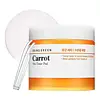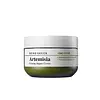What's inside
What's inside
 Key Ingredients
Key Ingredients

 Benefits
Benefits

 Concerns
Concerns

 Ingredients Side-by-side
Ingredients Side-by-side

Water
Skin ConditioningDaucus Carota Sativa Root Water
MaskingButylene Glycol
HumectantGlycerin
Humectant1,2-Hexanediol
Skin ConditioningSodium Lactate
BufferingGluconolactone
Skin ConditioningSalix Alba Bark Extract
AstringentPanthenol
Skin ConditioningAllantoin
Skin ConditioningCaffeine
Skin ConditioningHippophae Rhamnoides Fruit Extract
Skin ConditioningDaucus Carota Sativa Root Extract
Skin ConditioningCaprylyl Glycol
EmollientPolyglyceryl-10 Laurate
Skin ConditioningPolyglyceryl-10 Myristate
Skin ConditioningEthylhexylglycerin
Skin ConditioningDisodium EDTA
Melia Azadirachta Flower Extract
Skin ConditioningAlthaea Rosea Flower Extract
Skin ConditioningCitrus Aurantium Dulcis Peel Oil
MaskingDaucus Carota Sativa Extract
PerfumingMelia Azadirachta Leaf Extract
Skin ConditioningCurcuma Longa Root Extract
MaskingOcimum Sanctum Leaf Extract
Skin ConditioningBoswellia Carterii Oil
MaskingPelargonium Graveolens Flower Oil
MaskingVetiveria Zizanoides Root Oil
MaskingAmyris Balsamifera Bark Oil
MaskingCorallina Officinalis Extract
Skin ConditioningCyanocobalamin
Skin ConditioningMelaleuca Alternifolia Leaf Oil
AntioxidantDaucus Carota Sativa Seed Oil
EmollientRose Flower Oil
MaskingCitric Acid
BufferingGlycine Max Oil
EmollientBeta-Carotene
Skin ConditioningWater, Daucus Carota Sativa Root Water, Butylene Glycol, Glycerin, 1,2-Hexanediol, Sodium Lactate, Gluconolactone, Salix Alba Bark Extract, Panthenol, Allantoin, Caffeine, Hippophae Rhamnoides Fruit Extract, Daucus Carota Sativa Root Extract, Caprylyl Glycol, Polyglyceryl-10 Laurate, Polyglyceryl-10 Myristate, Ethylhexylglycerin, Disodium EDTA, Melia Azadirachta Flower Extract, Althaea Rosea Flower Extract, Citrus Aurantium Dulcis Peel Oil, Daucus Carota Sativa Extract, Melia Azadirachta Leaf Extract, Curcuma Longa Root Extract, Ocimum Sanctum Leaf Extract, Boswellia Carterii Oil, Pelargonium Graveolens Flower Oil, Vetiveria Zizanoides Root Oil, Amyris Balsamifera Bark Oil, Corallina Officinalis Extract, Cyanocobalamin, Melaleuca Alternifolia Leaf Oil, Daucus Carota Sativa Seed Oil, Rose Flower Oil, Citric Acid, Glycine Max Oil, Beta-Carotene
Artemisia Capillaris Extract 54.59%
Glycerin
HumectantHydrogenated Poly(C6-14 Olefin)
EmollientDipropylene Glycol
HumectantButylene Glycol
HumectantTriethylhexanoin
MaskingWater
Skin ConditioningCaprylic/Capric Triglyceride
MaskingBehenyl Alcohol
EmollientNiacinamide
SmoothingCyclopentasiloxane
Emollient1,2-Hexanediol
Skin ConditioningGlyceryl Stearate
EmollientCyclohexasiloxane
EmollientVincetoxicum Atratum Extract
Skin ConditioningPoncirus Trifoliata Fruit Extract
Skin ConditioningMadecassoside
AntioxidantMadecassic Acid
Skin ConditioningAsiaticoside
AntioxidantAsiatic Acid
Skin ConditioningPortulaca Oleracea Extract
Skin ConditioningCentella Asiatica Extract
CleansingSpinacia Oleracea Leaf Extract
Skin ConditioningHibiscus Esculentus Fruit Extract
Skin ConditioningBrassica Oleracea Italica Extract
AstringentBrassica Oleracea Capitata Leaf Extract
Skin ConditioningArtemisia Princeps Leaf Water
MaskingPanthenol
Skin ConditioningAdenosine
Skin ConditioningCitrus Aurantium Bergamia Fruit Oil
MaskingSalvia Officinalis Oil
MaskingGeranium Maculatum Oil
MaskingPogostemon Cablin Leaf Oil
MaskingDipotassium Glycyrrhizate
HumectantHydrogenated Lecithin
EmulsifyingC12-16 Alcohols
EmollientPalmitic Acid
EmollientAmmonium Acryloyldimethyltaurate/Vp Copolymer
Hydroxyethyl Acrylate/Sodium Acryloyldimethyl Taurate Copolymer
Emulsion StabilisingPolyglyceryl-10 Laurate
Skin ConditioningMicrocrystalline Wax
Emulsion StabilisingDiphenyl Dimethicone
EmollientPolyglyceryl-10 Myristate
Skin ConditioningStearic Acid
CleansingSorbitan Stearate
EmulsifyingEthylhexylglycerin
Skin ConditioningSorbitan Isostearate
EmulsifyingDisodium EDTA
Citronellol
PerfumingGeraniol
PerfumingLimonene
PerfumingLinalool
PerfumingArtemisia Capillaris Extract 54.59%, Glycerin, Hydrogenated Poly(C6-14 Olefin), Dipropylene Glycol, Butylene Glycol, Triethylhexanoin, Water, Caprylic/Capric Triglyceride, Behenyl Alcohol, Niacinamide, Cyclopentasiloxane, 1,2-Hexanediol, Glyceryl Stearate, Cyclohexasiloxane, Vincetoxicum Atratum Extract, Poncirus Trifoliata Fruit Extract, Madecassoside, Madecassic Acid, Asiaticoside, Asiatic Acid, Portulaca Oleracea Extract, Centella Asiatica Extract, Spinacia Oleracea Leaf Extract, Hibiscus Esculentus Fruit Extract, Brassica Oleracea Italica Extract, Brassica Oleracea Capitata Leaf Extract, Artemisia Princeps Leaf Water, Panthenol, Adenosine, Citrus Aurantium Bergamia Fruit Oil, Salvia Officinalis Oil, Geranium Maculatum Oil, Pogostemon Cablin Leaf Oil, Dipotassium Glycyrrhizate, Hydrogenated Lecithin, C12-16 Alcohols, Palmitic Acid, Ammonium Acryloyldimethyltaurate/Vp Copolymer, Hydroxyethyl Acrylate/Sodium Acryloyldimethyl Taurate Copolymer, Polyglyceryl-10 Laurate, Microcrystalline Wax, Diphenyl Dimethicone, Polyglyceryl-10 Myristate, Stearic Acid, Sorbitan Stearate, Ethylhexylglycerin, Sorbitan Isostearate, Disodium EDTA, Citronellol, Geraniol, Limonene, Linalool
Ingredients Explained
These ingredients are found in both products.
Ingredients higher up in an ingredient list are typically present in a larger amount.
1,2-Hexanediol is a synthetic liquid and another multi-functional powerhouse.
It is a:
- Humectant, drawing moisture into the skin
- Emollient, helping to soften skin
- Solvent, dispersing and stabilizing formulas
- Preservative booster, enhancing the antimicrobial activity of other preservatives
Butylene Glycol (or BG) is used within cosmetic products for a few different reasons:
Overall, Butylene Glycol is a safe and well-rounded ingredient that works well with other ingredients.
Though this ingredient works well with most skin types, some people with sensitive skin may experience a reaction such as allergic rashes, closed comedones, or itchiness.
Learn more about Butylene GlycolDisodium EDTA plays a role in making products more stable by aiding other preservatives.
It is a chelating agent, meaning it neutralizes metal ions that may be found in a product.
Disodium EDTA is a salt of edetic acid and is found to be safe in cosmetic ingredients.
Learn more about Disodium EDTAEthylhexylglycerin (we can't pronounce this either) is commonly used as a preservative and skin softener. It is derived from glyceryl.
You might see Ethylhexylglycerin often paired with other preservatives such as phenoxyethanol. Ethylhexylglycerin has been found to increase the effectiveness of these other preservatives.
Glycerin is already naturally found in your skin. It helps moisturize and protect your skin.
A study from 2016 found glycerin to be more effective as a humectant than AHAs and hyaluronic acid.
As a humectant, it helps the skin stay hydrated by pulling moisture to your skin. The low molecular weight of glycerin allows it to pull moisture into the deeper layers of your skin.
Hydrated skin improves your skin barrier; Your skin barrier helps protect against irritants and bacteria.
Glycerin has also been found to have antimicrobial and antiviral properties. Due to these properties, glycerin is often used in wound and burn treatments.
In cosmetics, glycerin is usually derived from plants such as soybean or palm. However, it can also be sourced from animals, such as tallow or animal fat.
This ingredient is organic, colorless, odorless, and non-toxic.
Glycerin is the name for this ingredient in American English. British English uses Glycerol/Glycerine.
Learn more about GlycerinPanthenol is a common ingredient that helps hydrate and soothe the skin. It is found naturally in our skin and hair.
There are two forms of panthenol: D and L.
D-panthenol is also known as dexpanthenol. Most cosmetics use dexpanthenol or a mixture of D and L-panthenol.
Panthenol is famous due to its ability to go deeper into the skin's layers. Using this ingredient has numerous pros (and no cons):
Like hyaluronic acid, panthenol is a humectant. Humectants are able to bind and hold large amounts of water to keep skin hydrated.
This ingredient works well for wound healing. It works by increasing tissue in the wound and helps close open wounds.
Once oxidized, panthenol converts to pantothenic acid. Panthothenic acid is found in all living cells.
This ingredient is also referred to as pro-vitamin B5.
Learn more about PanthenolPolyglyceryl-10 Laurate is an ester of lauric acid and Polyglycerin-10.
Polyglyceryl-10 Laurate is a cleansing agent and emulsifier. It helps gather dirt, oil, and other pollutants to be rinsed away. As an emulsifier, it helps prevent ingredients from separating, such as oil and water.
Polyglyceryl-10 Laurate may not be fungal acne safe.
Learn more about Polyglyceryl-10 LauratePolyglyceryl-10 Myristate isn't fungal acne safe.
Water. It's the most common cosmetic ingredient of all. You'll usually see it at the top of ingredient lists, meaning that it makes up the largest part of the product.
So why is it so popular? Water most often acts as a solvent - this means that it helps dissolve other ingredients into the formulation.
You'll also recognize water as that liquid we all need to stay alive. If you see this, drink a glass of water. Stay hydrated!
Learn more about Water